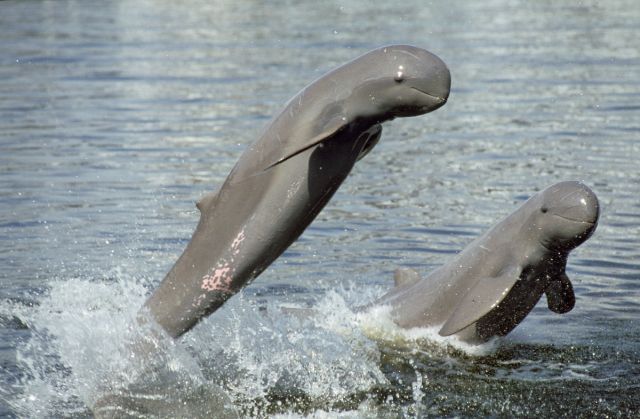
The Mekong River is the mother of all south-east Asian rivers, providing life-sustaining resources to millions of people. Now, the future of the Mekong, its people and wildlife are in jeopardy.
The government of Laos plans to build the hydroelectric Don Sahong Dam — the second dam proposed for construction on the Lower Mekong mainstream — on the main pathway in the Mekong that allows for year round fish migration.
If built, the Don Sahong Dam will entirely block the Hou Sahong Channel, endangering the rare Irrawaddy dolphins and fish migration throughout the region, with far-reaching consequences for people’s food and livelihood security in Laos, Cambodia, Thailand and Vietnam. Lives in this area and throughout the Mekong are intricately entwined with the river, which provides an identity and rich history, as well as a source of income and food security.
The planned site of the Don Sahong Dam is also a unique section of the Mekong River, home to one of the last remaining populations of critically endangered Irrawaddy dolphins, as well as the iconic Khone Phapheng waterfalls, and is near an internationally protected Ramsar wetland site in downstream Cambodia.
A commission of four southeast Asian states will soon meet to decide whether to build the dam. The dam would have untold consequences for the entire Mekong ecosystem and the people that depend on the river for their livelihoods. It would most likely mean the extinction of the Mekong’s last population of Irrawaddy dolphins.
Irrawaddy dolphins live in saltwater and freshwater in south and south-east Asia. They were widespread in coastal areas, but they now survive only in three rivers — the Mekong in Cambodia and Laos, the Mahakam in Indonesia and the Ayeyarwaddy in Myanmar. The population in each of these rivers is thought to be less than 100 dolphins and the IUCN Red List of Threatened Species describes these three river populations as critically endangered.
The population in the Mekong is estimated to be 75 adults. Research shows that the population is slowly declining and the mortality rate is unsustainably high. In the last 10 years at least 115 dolphins have died. Fishers along the Mekong use gillnets to fish and dolphins are sometimes caught in them as bycatch.
In 2006 the Cambodian government, with the support of conservation group Save Our Species (SOS), created the Dolphin Commission to protect Irrawaddy dolphins in the Mekong River. The Dolphin Commission now has 17 ranger posts along the river. More than 70 rangers patrol the river to prevent the use of gillnets in dolphin protection zones.
A grant from SOS enabled the project team to provide training, equipment and fuel to allow more frequent and effective ranger patrols, to reduce the number of dolphins that die in gillnets each year.
The situation of the river dolphins was already dire and this dam would probably be the last straw in their difficult
struggle for survival. Now is the time to call on these leaders to stop playing with the lives of the Irrawaddy dolphins, destroying the livelihoods of their people and jeopardising the future of the vital resources the river supports.
Like the article? Subscribe to Green Left now! You can also like us on Facebook and follow us on Twitter.